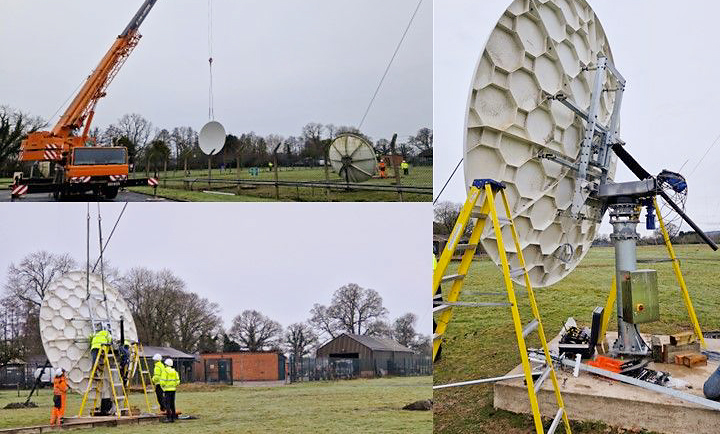October 2017
Why should broadcasters move to IP for production applications? After all, SDI has been around for nearly 30 years..
SDI has been around for nearly 30 years as an open standard and has served us well. Point to point connections provide a reliable network infrastructure and deliver superb studio video quality. SDI offers low levels of jitter and latency, is easy to deploy, and implementing frame accurate switching is straight forward.
It is however a technology that is unique to the relatively small media equipment industry. Until recently, little has been done in production applications to take advantage of the economies of scale offered by high-speed Ethernet-based technologies so widely deployed in telecoms, trading floors and many other demanding applications.
dB Broadcast has advised clients on the transition to IP for some time, and of course, the adoption of IP within broadcast workflows is not new. Transmission and distribution networks started moving away from ASI early in the first decade of this century, and now with over 15 years of experience, these networks provide an affordable, flexible and reliable means for distributing MPEG-2 transport streams. More recently, OTT streaming applications have seen the entire distribution workflow reliant on IP technology all the way to the display device. Also, starting more than 10 years ago, the tape to file migration process has been highly reliant on IP infrastructure.
Whilst the adoption of IP-based commercially off-the-shelf (COTS) technology minimizes the reliance on infrastructure technology unique to the broadcast industry, there are other advantages that can be realized by adopting IP in place of SDI.
The most fundamental advantage offered by adopting IP is the massively increased flexibility it offers to production workflows. One example of this is that IP is an enabler to centralise common resources that can be applied to multiple productions. By implementing centralised production facilities, it is possible to reduce the resource required in each studio or on location. In the future, as individual camera feeds are all available at the centralised production facility, these could be selectively live streamed to the consumer, enabling them to select specific camera feeds in addition to the produced main feed. Essentially this is an end-to-end IP service from the camera to the consumer’s playback device. This opens up potential new business opportunities for the broadcaster to offer augmented services beyond the basic produced programming.
Another advantage of using IP is that of routing flexibility. With a correctly designed IP network, any network node can be routed to any other network node, irrespective of the node’s physical location. This also means that unlike SDI-based facilities, which have a pre-defined hard limit to the number of usable sources, an IP-based facility is much more versatile. Extra services and capacity can be added for major events – such as elections or the Olympics – more easily and at lower cost than with existing SDI-based facilities. Also, when this routing flexibility is combined with the separate elementary flows for video, audio and metadata, as offered by SMPTE ST 2110, tremendous production flexibility is offered to the broadcaster. Effectively, devices connected to the network act as a resource pool that can be easily reconfigured and allocated under software control for individual production needs, without the need to change cabling. This means that any gallery in the network has access to any IP-enabled camera, and any sound desk has access to any IP-enabled audio source, even if the resources are all in different physical locations.
Obviously, having separated video and audio elements does mean that a separate timing system is required within the network to ensure that audio/video delay issues are avoided. This system is known as Precision Time Protocol (PTP), and all networks deploying SMPTE ST 2110 must also implement PTP in that network. Likewise, all switches and routers must be ‘PTP aware’.
The next aspect to consider is that of scalability. With SDI, if a move is made from HD to UHD/4K, or indeed from UHD/4K to 8K, the network infrastructure needs to be changed. With IP, scalability is driven by network bandwidth. In other words, the network simply needs to handle more data.
SDI is also fundamentally tied to hardware implementations, whereas, aside from the physical layer network interface, with IP networks it is possible to implement devices as ‘appliances’ more heavily reliant on software, such devices being inherently adaptable and upgradeable. This makes it unnecessary to do wholesale replacement of network elements as new technology is deployed. Likewise, IP makes virtualisation of network elements a very real prospect.
Does this mean the end for SDI? This is unlikely in the near term as some IP network elements are not yet available, and so hybrid SDI/IP facilities are being implemented. In the longer term, SDI still offers a very simple way of making point to point connections between devices. In the same way that IP has not yet eliminated the use of ASI in the transport stream distribution world, SDI is likely to be used for the foreseeable future, albeit in increasingly niche applications.
As the largest and most respected independent UK system integrator, dB Broadcast has been involved in the implementation of large scale flagship IP production projects, and is an ideal partner for the successful deployment of IP-based live and non-live production applications.







